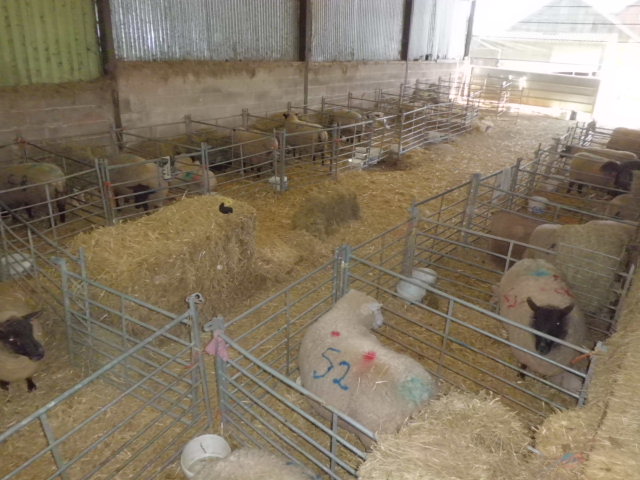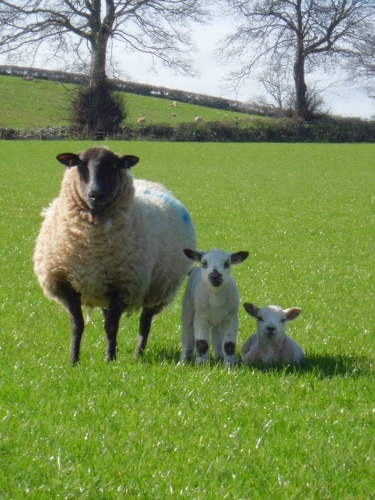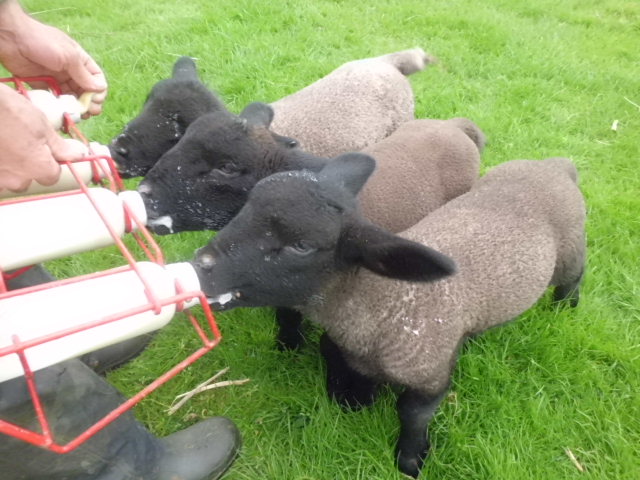It may seem early, but in the lowland valleys of Devon we start lambing very early. At Hele Payne Farm we lamb the majority of our flock in January and February. As we have 400 ewes (female sheep) we are very busy as we hope to have over 600 baby lambs which means by the end of lambing we have over 1,000 sheep to look after! Working on the farm are my husband, Roger, and I and my father in law, John, who is very proud of the fact that he is 78 and still extremely fit. He is always out on the farm by 6.30am every morning and still puts in a full day’s work!
As you can imagine, lambing is the busiest time of year, but also the most rewarding. A few weeks before our ewes are due to lamb we bring them in from the fields and put them in our sheds. Our sheep have ultrasound scans earlier in their pregnancy so, when we bring them in, they can be separated into groups depending on whether they are pregnant with single, twin or triplet lambs. We can then feed them according to their needs.
In the sheds we can then keep a closer eye on them 24 hours a day so we don’t miss any going into labour. Although the majority of our sheep tend to give birth naturally, without any intervention from us, we do have to assist when the lambs are not presented correctly for delivery. Occasionally we have a very large lamb, too big to fit through the cervix, and the vet has to be called to perform a caesarean section. Luckily this year we have only had to call the vet once for this procedure and that was a couple of days ago. Thankfully, Mum and her gorgeous twins are doing fine!
When a ewe has lambed we put her and her new-born lambs into an individual pen so that they can bond. It is so amazing that every ewe will know the individual call of her lambs so they can find each other out in the field. By putting them in separate pens this important bonding process occurs naturally. It is essential to check the new-born lambs feed with the special milk (colostrum) that their mothers produce. This is the first milk that the ewes produce and is full of nutrition and antibodies, so setting the lamb up for a great start in life. After a couple of days in the individual pens the lambs and mothers are numbered, this is for the farmer’s benefit when we need to know who belongs to who! Then, if the weather is kind, we let the mothers and lambs out into the fields. We start with a small paddock and then move onto a larger field when we know they are independent enough to fend for themselves.
Some of the lambs are now about a month old and they become really mischievous just like naughty school children in the playground! If there is a tiny gap in the hedge they will get through it! They tend to follow each other, so if one gets out you can be sure all his buddies will follow! Somewhere lagging behind you will usually find a frazzled farmer! 
Lambs topping up in the field
Guests love watching or helping with the lambing. Feeding pet lambs is always a favourite activity for children. So, by staying on a farm in Devon you will find so much going on just outside your front door and you are welcome to pop on your wellies and join in if you are so inclined. However, if you prefer to relax by the roaring log fire then that’s fine too!
Sally